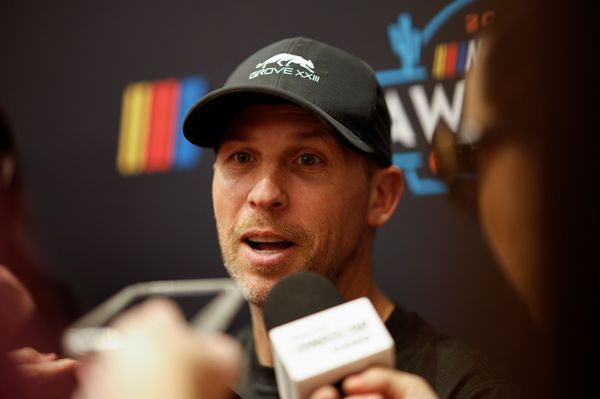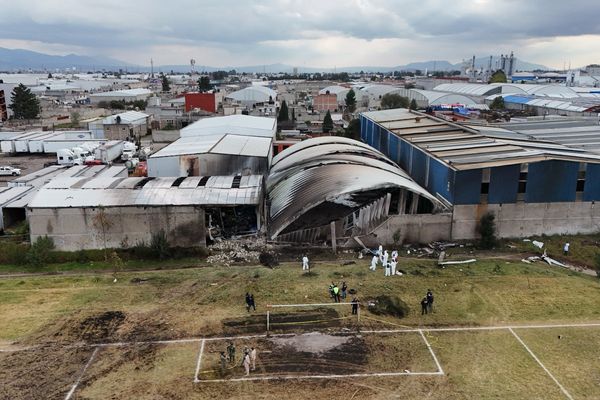
Investing in hospitals is viewed as a safe bet. People regularly get sick and the population ages.
Australian private hospitals have the added advantage of being backed by a government-supported private healthcare system.
But on Monday, a huge private equity-backed hospital deal officially soured, sending Healthscope into the hands of receivers, and raising questions over whether Australia’s private healthcare system needs to be overhauled.
Brookfield, a private equity multinational headquartered in Toronto, paid $4.4bn for Healthscope in 2019 after a competitive bid inflated the price tag.
The amount was considered high at the time given there were signs an increasing number of Australians were dropping out of private health insurance.
Healthscope had also recently opened its biggest project yet, the Northern Beaches hospital. That facility was plagued by staff shortages and unavailable stock of medical supplies.
A perfect storm
Peter Breadon, the health program director at the Grattan Institute, said Brookfield “competed fiercely” in the bidding process. “So they paid a premium, then they loaded it up with debt before interest rates skyrocketed.
“They were then hit by the pandemic, which disrupted everything,” he said.
The Covid-19 pandemic exacerbated financial pressures as elective surgeries were postponed or cancelled, further eroding revenue.
When patients did return, many opted for day surgery, robbing the hospital network of high overnight room charges in a trend that has swept through global healthcare.
“There was a perfect storm, which was a mix of bad luck, bad timing, bad decisions, but compounded by broader sector wide headwinds,” Breadon said.
“Healthscope should not be taken as a sign that the whole system is on the verge of collapse, but it does shine a light on some of the vulnerabilities in the sector.”
Long-term signs of financial stress at Healthscope crystallised earlier this year when the hospital operator started falling behind on its rental payments.
In March, one of Healthscope’s landlords, a real estate investment vehicle run by HealthCo, issued a breach notice over unpaid rent, and threatened to bring in rival hospital operators.
Less than three months after the breach notices were issued, Healthscope’s lenders withdrew support, plunging the company into receivership on Monday.
Healthscope said in a statement that its 37 hospitals would remain open and operating on a business-as-usual basis, with no impact on staff, doctors or patient care.
A sales process is now under way.
Blame game
Prof Francesco Paolucci, an expert in health economics at the University of Newcastle, said Healthscope’s failings are indicative of more profound issues facing Australia’s private health sector.
Private hospital providers are facing increasing pressure on costs, driven by an ageing population with more chronic disease, rising costs of providing care and workforce scarcity.
A “blame game” has ensued between hospitals and insurers as to who should bearing the costs. But ultimately, Paolucci said, the government needs to step in to create a framework to manage this situation.
“That’s why we’re here. The framework is not there,” he said.
With more than 60 private hospitals having closed in recent years, Paolucci said he would not be surprised if other private hospitals will soon hit financial trouble.
Failing to provide a long term solution has implications for the public sector, as private providers support the public system, and private health insurers receive billions of dollars in annual government subsidies.
The health minister, Mark Butler, told the ABC on Tuesday the federal government would not bail out private operators. He described Healthscope as a “unique case” subject to very complicated financial structuring.
However, he acknowledged the need for broader reform, and said he expects private health insurers to pay more of their income to private hospitals.
“I’ve given them a particular timeframe. If they haven’t resolved that over the coming weeks, I’ve said that I reserve the right to act,” Butler said.
Wrong model?
The fall of Healthscope has sparked discussions about sector reforms.
The Grattan Institute has recommended a model that independently establishes a floor price for hospital visits to remove disputes between insurers and hospital operators over the cost of care.
In the meantime, Healthscope’s receivers are looking to sell the network of 37 hospitals, which could be done through a carve-up to different owners or in a single transaction.
Healthscope has said it has received “around 10 non-binding indicative offers” and that a sales process would take up to about 10 weeks.
Dr Rachel David, the chief executive of the health insurance representative group Private Healthcare Australia, said the private sector would be stronger without Brookfield’s presence.
“The demise of Healthscope is an example of why multinational private equity is the wrong model to finance and run hospitals,” David said.
“From the moment private equity took ownership of Healthscope hospitals in 2019, it made a series of terrible decisions that have brought the hospital group to its knees.”
Brookfield was contacted for comment.
Mark Fitzgibbon, the former long-serving CEO of the health insurer Nib, said the future for private hospitals, notwithstanding some of the structural issues, was positive, and that the country needed a thriving sector.
“These assets are still highly valuable and they’ll find their price,” Fitzgibbon said.
“Ultimately, there’s more and more growth. The Australian population is growing, healthcare spending is growing, so the long term outlook for the private hospital system is good, but there will be disruptive forces, and there will be changes.”







